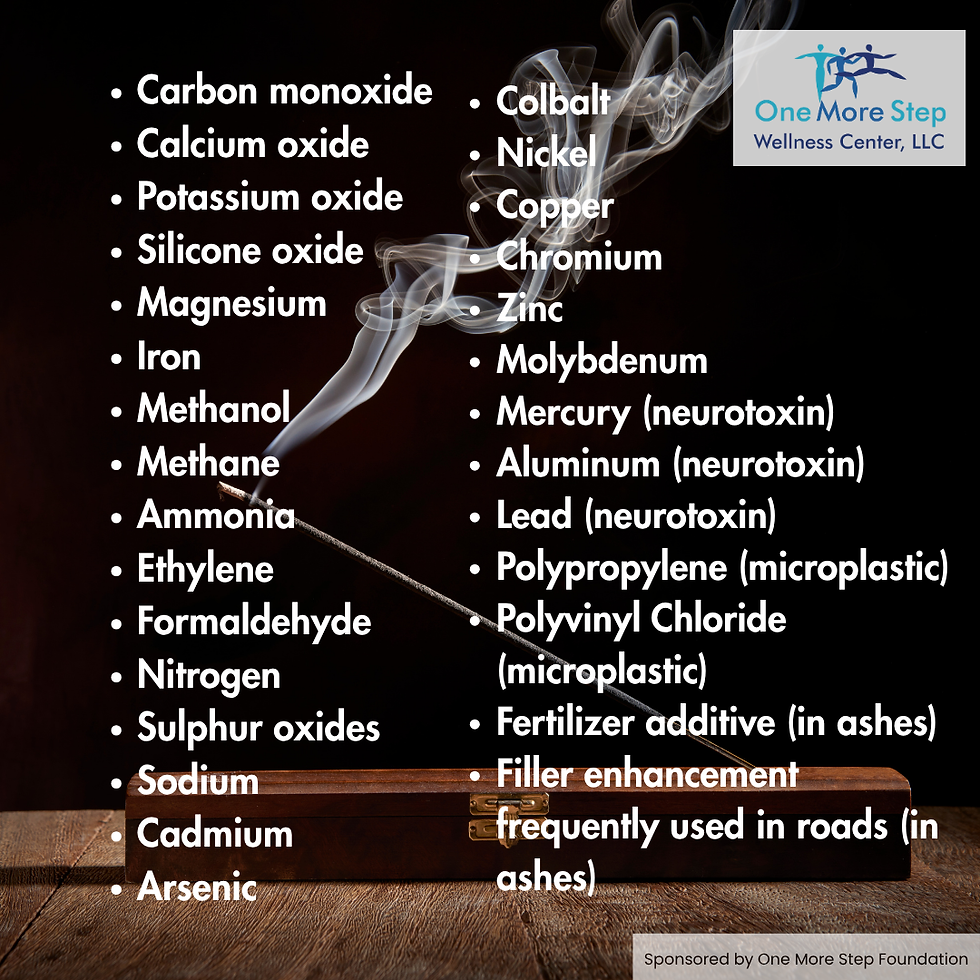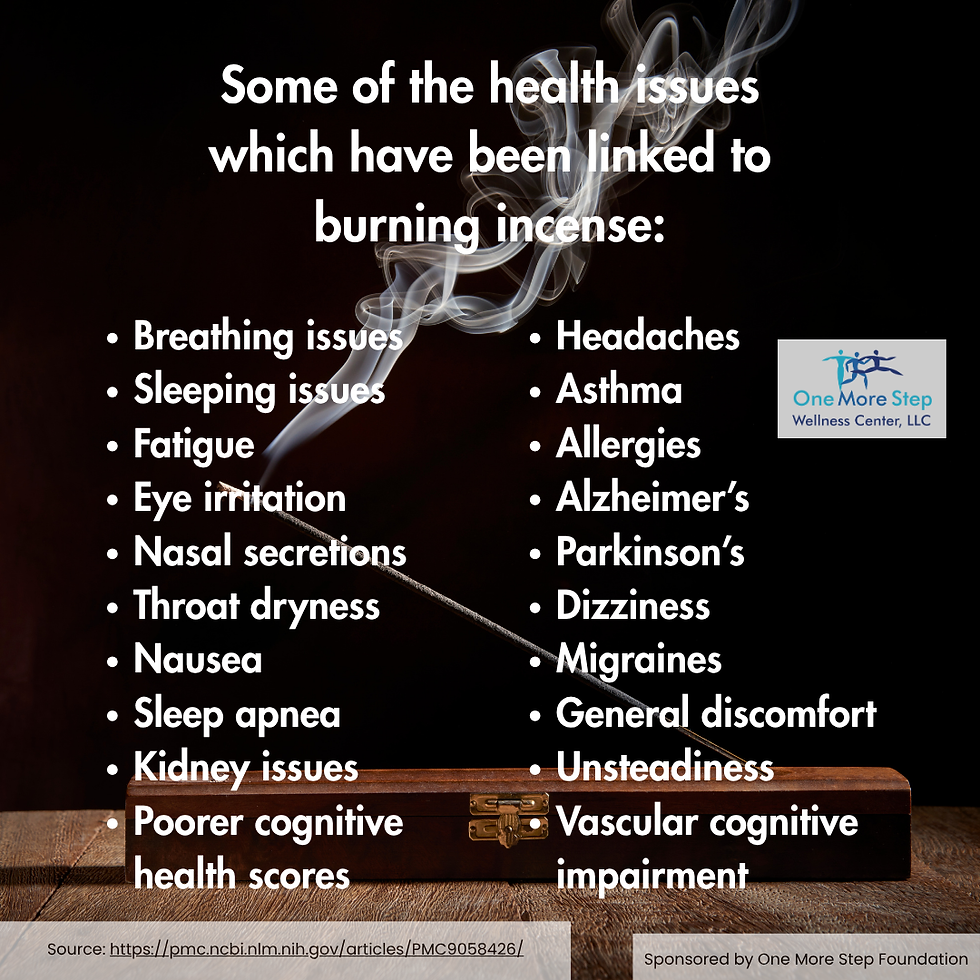Air Fresheners and Incense, and Your Health (Part 2)
- Dr. Melissa Adams

- Jul 15
- 4 min read

Last week, we looked at Part 1 concerning air fresheners and incense and whether or not they may have a negative impact on your health. This week, we are talking specifically about incense.
Incense is something used by many in their homes, work places, used in temples, for meditation, and religious purposes. Some prefer to have incense burning nearly every day, as they find the scent to be comforting.
Incense includes sticks, coils, cones, mosquito repulsion, and fresheners. The burning of incense creates a potentially unique health risk because it creates 4 times the particulate matter that a cigarette creats. It is also worth noting that coils release even more smoke than other options.
What Incense Contains & What May Be Released
Incense is created using a wide variety of chemicals, far more than what people likely realize (and there is no regulation requiring the ingredients to be listed on the box). Some chemicals are released into the air as smoke and/or fragrance, for us to breathe and consume, others are in the ashes which we may touch or may impact wildlife or waterways when we dispose of the ashes.
The creation of incense often involves the use of coal and/or charcoal, which is in the product to help it burn smoothly, but can be the source of various chemicals.
Here is a list of chemicals and elements which have been found in incense or released when it is burned:

Something consistent throughout the studies is that name brand does not seem to matter, they all seem to have a variety of chemicals in their make-up. One name brand in particular was mentioned in a study, "Cup dhoop" was reported to have the highest cancer risk of the four they tested (Cone dhoop, Natural Incense Powder, and Agarbatti were the other 3 brands). The cancer risk for Cup dhoop was 5 in 100,000.
Incense and General Health Concerns
This study looked at health and environmental risks of incense smoke and noted that the particulate matter from the burning of incense is very very very small, so small that gravity is unable to bring them down to the ground or the floor. This means this particulate matter remains in the air and when they are breathed in, they go deep into the lungs and cross the alveoli of the lungs (the tiny sacs in the lungs where oxygen and carbon dioxide are exchanged so carbon dioxide may be exhaled).
Due to this very small size, there is a lot of unpredictability. It is currently unknown as to where exactly all the particulate matter ends up in the body and what biochemical reactions may be affected.
As a result of this nanosized particulate matter, the use of incense has been linked with a variety of health concerns and issues, can cause changes to lung tissues, and other issues ...

Headaches caused by incense may be caused by the carbon monoxide which is released when incense is burned. This may decrease the amount of oxygen in the blood which can then impact the red blood cells and then in turn impact various organs and muscles causing headache, fatigue, and dizziness. This chain-reaction may, in extreme cases, cause red blood cells to rupture.
Kidney function may be impaired by the particulate matter which is released when incense is burned. There is even a risk of end-stage renal disease for those who are burning a lot of incense (such as daily for many years).
When people burned incense regularly for 3 years or more, they also experienced poorer cognitive health scores. Their brain is changed and their neurological function was impacted, particularly the Default Mode Network (DMN) which is supposed to be active when we are resting, then our brain is supposed to switch to active brain networks when we are not resting. The impairment of the DMN is indicative of several psychiatric and neurological conditions. Indoor incense burning may be a significant factor behind reduced cognitive resilience and future cognitive decline, as well as a risk factor for vascular-cognitive impairment.
When it comes to our beloved pets, they may also be impacted. It seems that dogs with respiratory disease were more likely to be exposed to incense in the home. On the other hand, cats may also be impacted and may experience more serious effects from the particulate matter which is the result of burning incense.
In Part 3, we will discuss incense and cardiovascular mortality, cancer, and children, all demonstrating further dangers of the use of incense, despite the fact that it is often utilized in ways which involve creating a comfortable, enjoyable, or relaxing experience or home.
Blog sponsored by One More Step Foundation
This is not medical advice, always ask a chiropractor if chiropractic care is appropriate for you, and your preferred healthcare provider before making dietary, supplement, or lifestyle changes.






Comments